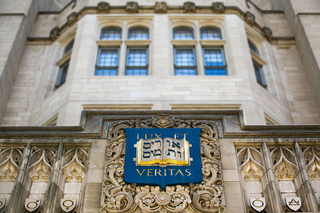Greenhouse Gas Protocol-aligned land use change emission metrics
In this role, you will support this collaborative effort spearheaded by WRI to develop best practice metrics to help operationalize the LSRS, making it easier for companies to produce comparable metrics that reflect their efforts towards better traceability and lower emissions.
For this specific position, you would be helping the team explore spatial datasets and methods for calculating scope 3 emissions from different land use changes related to commodity production in their supply chain at different levels of traceability. Throughout 2024, our team in collaboration with our expert partners have developed aligned methods for deforestation emissions. For this new phase of the project, we aim to expand to other land uses and explore the available spatial data to calculate these emissions. We also plan to expand our work on livestock emissions reporting to account for emissions from pastures and feed. As an intern, you will have the opportunity to interact with different companies, consultants, and institutions who are involved in scope 3 GHG accounting, and conduct research that can be directly used by these companies.
This position will carry out GIS analyses to support the development of methods for calculating land use change emissions. Some initial stages of work will be: 1) testing different permutations of calculating GHG emissions from land use changes (different data sets, different methods) with WRI’s Global Forest Watch and Land & Carbon Lab Research team and 2) calculating emissions from different land uses globally due to supply chains.
This position requires some experience in programming with geospatial data and large-scale analyses. Familiarity with forest carbon monitoring and corporate supply chains is preferred. You will be supported by researchers and analysts throughout GFW/LCL.
Qualifications
- Pursuing a degree in forestry, environmental science, environmental policy, or related field
- GIS or remote sensing experience
- Familiarity with GHG accounting, GHG quantification methods, life cycle assessment, agriculture, forestry and land use-related issues, supply chain management, or related topics preferred
- Familiarity with coding (e.g., R, Python, Google Earth Engine)
- Strong research, writing, presentation, and interpersonal skills
- Ability to work both independently as well as part of a team, manage multiple priorities, and work under tight deadlines
- Commitment to WRI’s mission
Background
Companies track their GHG emissions using corporate GHG inventories and can use the GHG Protocol Corporate Accounting and Reporting Standard for requirements and guidance on compiling GHG inventories across all sectors. The GHG Protocol’s new Land Sector and Removals Standard (LSRS) will provide companies with high-level requirements and guidance on how to report Scope 1 and Scope 3 land use change-related metrics: GHG emissions from land use change — including deforestation — and land occupation metrics. However, given the breadth of the audience it serves, the issues it covers and its need to stay data-agnostic, the LSRS offers companies considerable flexibility in selecting input data and methods.
As a result, companies sourcing the same commodities from the same supply chains may report very different GHG emissions and land occupation metrics, and consequently arrive at different conclusions when tracking progress towards reducing emissions. This can lead to confusion, inefficiencies and contradicting claims from companies that are based solely on methodological or data differences rather than on-the-ground realities.
WRI and Quantis, with the support of Mérieux NutriSciences | Blonk and HowGood, are addressing the urgent need to improve comparability of results and provide a harmonized resource for the industry. Together, WRI and its partners are operationalizing aligned, transparent and science-based metrics that follow the LSRS to improve land use change emissions, starting with deforestation and land occupation in corporate accounting.
Importantly, the results of this collaboration will be made publicly available, including a public technical note explaining the methods underpinning the metrics. WRI and its partners aim to promote standardization and comparability in corporate inventory emissions reporting by publishing detailed methods to calculate land use change emissions and land occupation metrics for supply chains with different levels of traceability and offering open-source tables of emission factors and yield factors for key commodities.
About World Resources Institute (WRI)
WRI is a trusted partner of change who aims to fundamentally transform the way the world produces food, uses energy and design its cities to create a better future for all. WRI’s mission is to move human society to live in ways that protect Earth’s environment and its capacity to provide for the needs and aspirations of current and future generations.
About Land and Carbon Lab (LCL)
Land & Carbon Lab was founded by World Resources Institute and the Bezos Earth Fund to develop breakthroughs in geospatial monitoring to help governments, businesses and communities power solutions for sustainable landscapes. Land & Carbon Lab conducts research and pioneer new data and monitoring capabilities, including by harnessing the power of large language models to unlock new ways of interacting with geospatial data. LCL’s new data and technology assets provide monitoring insights across all ecosystems as well as carbon emissions and sequestration related to all land uses.
